Selecting the right dampers for your HVAC system can be difficult. Here are four factors to help you understand control and balancing dampers.
Dampers and HVAC Design
HVAC projects require dampers to direct airflow from the start point – an intake point – to where it’s needed in your building. Dampers help direct airflow to the right spot, whether you need cool air in a meeting room or to warm a chilly office.
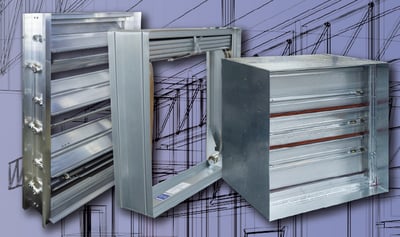
Your HVAC system will have various applications that require different dampers. You may require a balancing damper to equalize air pressure between rooms. Or, you may have an exhaust point that should stay closed when it isn’t in use.
There may be ductwork of varied sizes across your system. All these factors can make it difficult to understand what you need for your project. For this article, we will narrow it down to four key factors. By addressing these factors, you will have a better understanding of your project's needs.
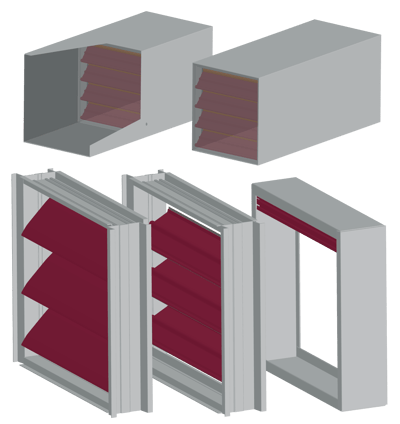 Different dampers will serve different purposes in your HVAC system. Start your search by understanding the application.
Different dampers will serve different purposes in your HVAC system. Start your search by understanding the application.
Understanding the Application
The first factor is the application itself. Know what the damper will do in your HVAC system before anything else. Do you need to direct airflow? Should the damper balance air pressure? Different damper types will serve different purposes.
Control dampers regulate airflow while balance dampers regulate the air pressure between ducts. A balance damper would alleviate issues with pressure, which can cause cold spots and drafts in your rooms.
Backdraft dampers have a unique blade design. They regulate airflow like a control damper, but only in one direction. These dampers can save you money when installed at an exhaust point, or another area where air flows in one direction.
However, they will damage your system if air flows in the wrong direction. Determine what you need the damper to do before selecting a damper type.
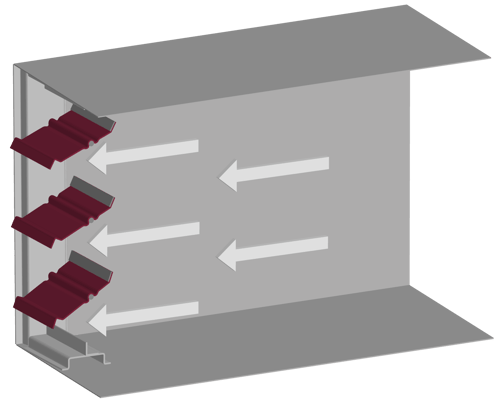 In this example, the airflow will push the blades open. This example shows an effective use of a backdraft damper.
In this example, the airflow will push the blades open. This example shows an effective use of a backdraft damper.
The next factor will be the needs of the application. The damper should work for its intended application. This requires understanding the specific needs and limitations of the application.
Control dampers will have a maximum allowable air velocity and maximum air pressure. The operating conditions in the duct should not exceed these limitations.
For example, let's say you found a control damper with a maximum velocity of 3000 feet per minute, but the air velocity in your duct is expected to regularly exceed 3500 feet per minute. You will need to find a new control damper for this application. You should also know how the damper will perform in the application.
Control dampers are tested in laboratories approved by the Air Movement and Control Association (AMCA) and receive an AMCA Ratings Seal when the tests are complete. This means that all testing data presented on the submittal was gathered in an AMCA-approved laboratory using AMCA’s standardized test methods. Control dampers typically receive a ratings seal for one or both of the following:
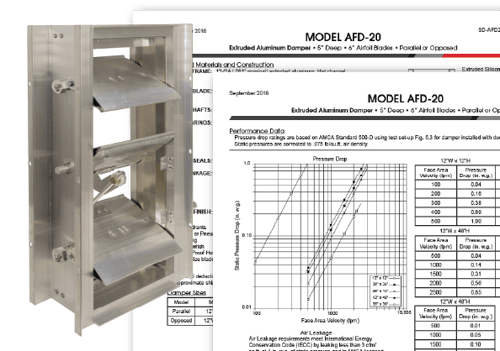
Air Performance
- Air performance testing measures the loss in air pressure as air flows through a damper. Once complete, the test data will be presented on the damper's submittal as a line graph or as several tables. Both methods display the amount of pressure drop at various air velocities.
- Pressure drop will differ from model to model and will increase with air velocity. A greater pressure drop will require more power to pass the necessary amount of air through the duct.
- All dampers will impact airflow; the key is finding a damper with minimal pressure drop. Low pressure drop translates to greater system efficiency.
- For more on air performance, check out "Air Performance" on the Newsstand.
Air Leakage
- Air will leak through the blades when the damper is closed. A closed damper should maintain as tight a seal as possible. Excess leakage can affect performance across the system.
- Dampers can be tested and rated for air leakage by an AMCA-approved lab, to determine the amount of leakage. Once this data is gathered, the damper will be given a Leakage Rating depending on the amount of leakage.
- All control dampers will leak to some degree, but the key is to find a damper with minimal leakage. A tight-closing damper with low air leakage is an efficient one.
- Learn more about air leakage with this Newsstand article: Air Leakage - The Performance Killer
It is crucial to understand how the damper will perform. Consult the damper’s submittal for pressure drop and air leakage stats. Understand the specific needs of the application.
Starting a new project and need HVAC dampers? Check out the 517-518 steel control damper from Arrow United Industries. Contact Arrow United and let us help with your HVAC requirements!
Understanding the Size
Sizing is usually the first factor that most consider, but there is more to it than setting dimensions. How big is the duct? You will need the prospective damper to closely match this size, but there is an additional factor to consider.
Dampers are typically mounted inside of a duct or a ventilation opening, but they can also be mounted onto the opening. This is known as an on-face or out-of-wall installation. The damper will sit on top of the opening, so that its frame is exposed. These two installation types require you to measure the damper’s dimensions from different areas of the damper.
For an on-face mount, you will measure the inner dimensions of the damper for the correct size, so that the damper’s face fits the size of the opening. For in-duct mounting, you will measure the outer perimeter of the damper’s frame, because the full damper must fit inside the duct.
Manufacturers will typically reduce the dimensions by a quarter inch on width and height. This is known as “under sizing” and accounts for factors like thermal expansion. Determine which mounting type will work best for your application, then measure the damper for the correct dimensions.
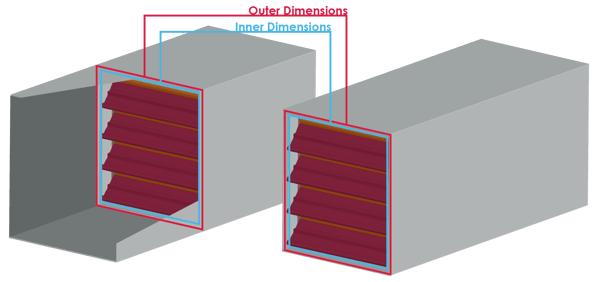
For on-face installations, measure your dampers along the inside of the frame, the "inner" dimensions. When installing the damper in a duct, measure the unit along the outside of its frame or the "outer" dimensions.
Knowing the Options
The last factor should be accessories. Each damper type can receive accessory parts to aid with its intended task. A control damper can receive an electric actuator to automate the opening and closing action. You can add a remote test box or a position indication switch to help test the during maintenance. Accessories may affect the damper’s performance, depending on how they are installed.
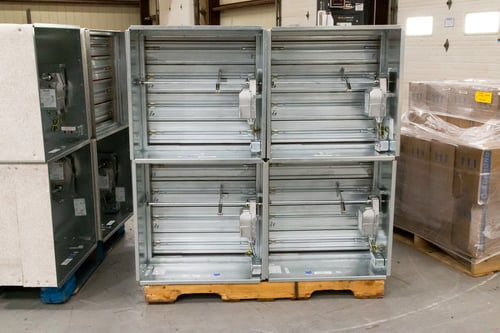
Note the actuator's location. The actuator will be in the airstream when the damper is open.
For instance, a face-mounted actuator will always be in the airstream and will affect the damper's air performance. Face-mounted actuators can save space around the jambs. A face-mounted actuator will be in the air stream and will affect air performance.
On the other hand, you may choose to mount the actuator on the jambs. You will need to make sure there is enough clearance to install the actuator and to service it when needed. After you have found the right damper, consider all your options.
Damper selection doesn’t end with the right type. There are several factors to consider. Understand what you need from each damper, then understand how the right damper will work for you.
For more on dampers, check out these other Newsstand articles:
- The Condenser - Product Spotlight: The 517-518 Series
- Options for Control Dampers
- Five Types of Dampers and When to Use Them
Need help right away? Contact MCDLG today.
.webp?width=91&height=70&name=MCDLG%20Logo%20(Resize).webp)
.webp)





